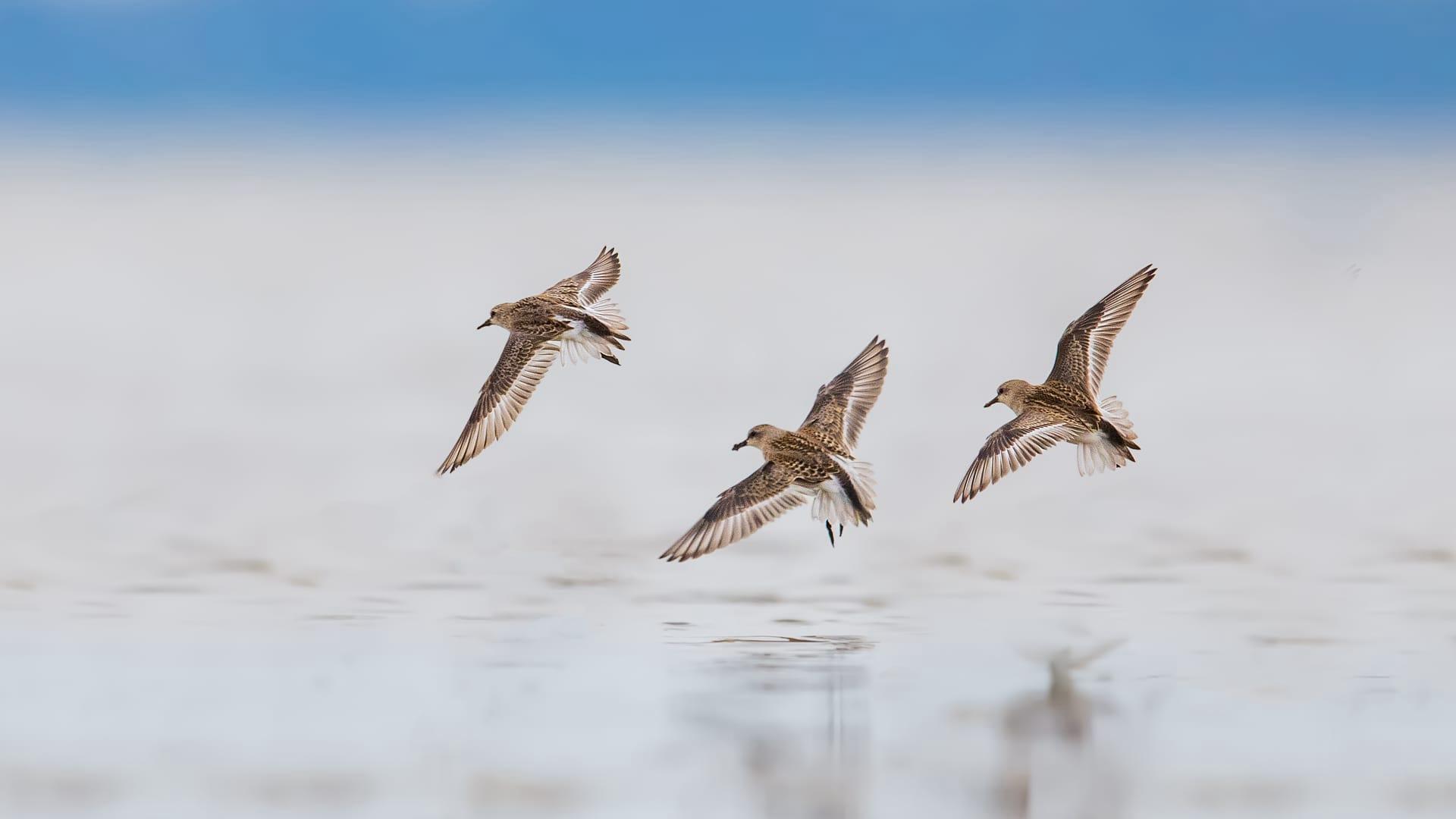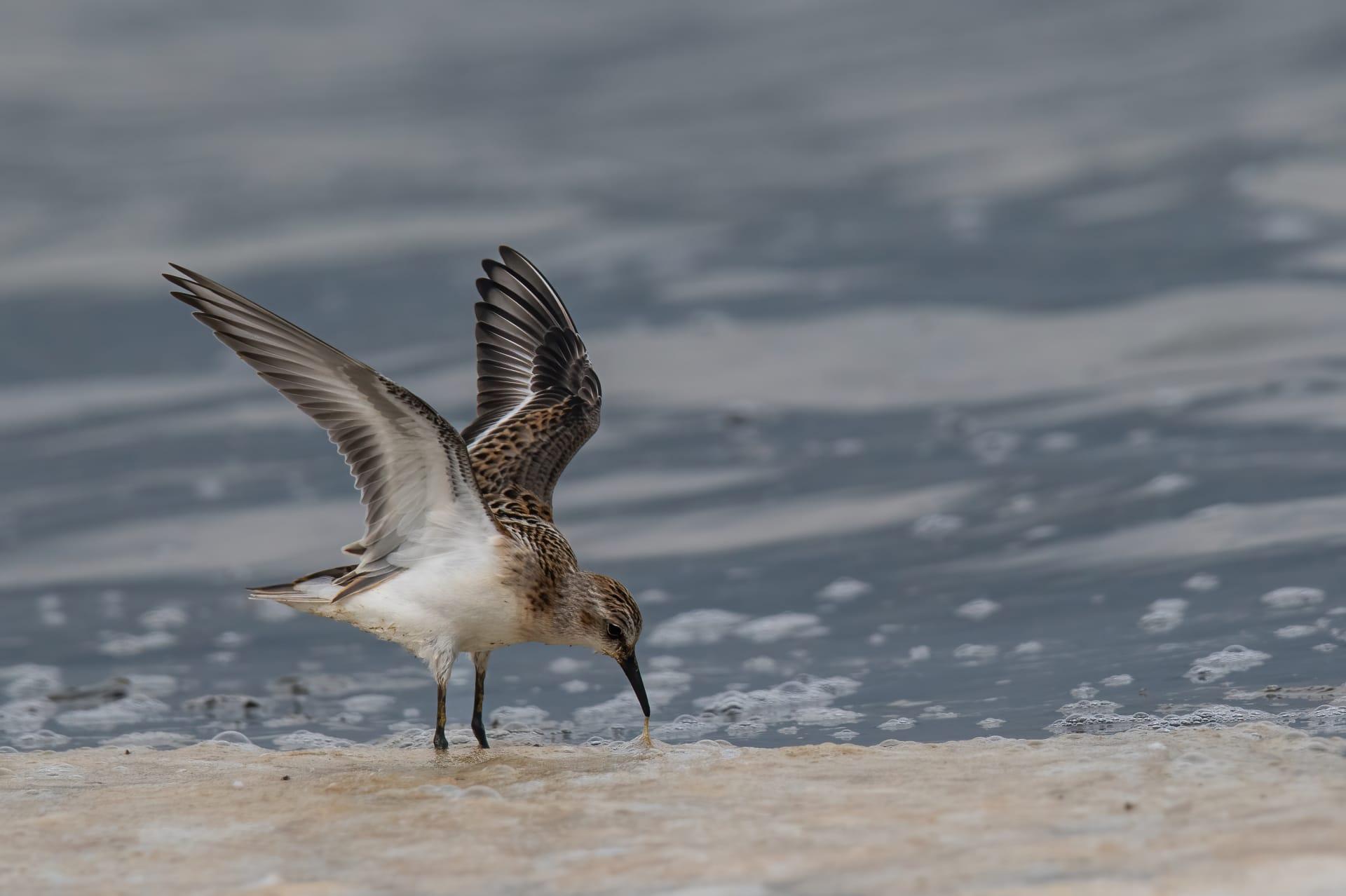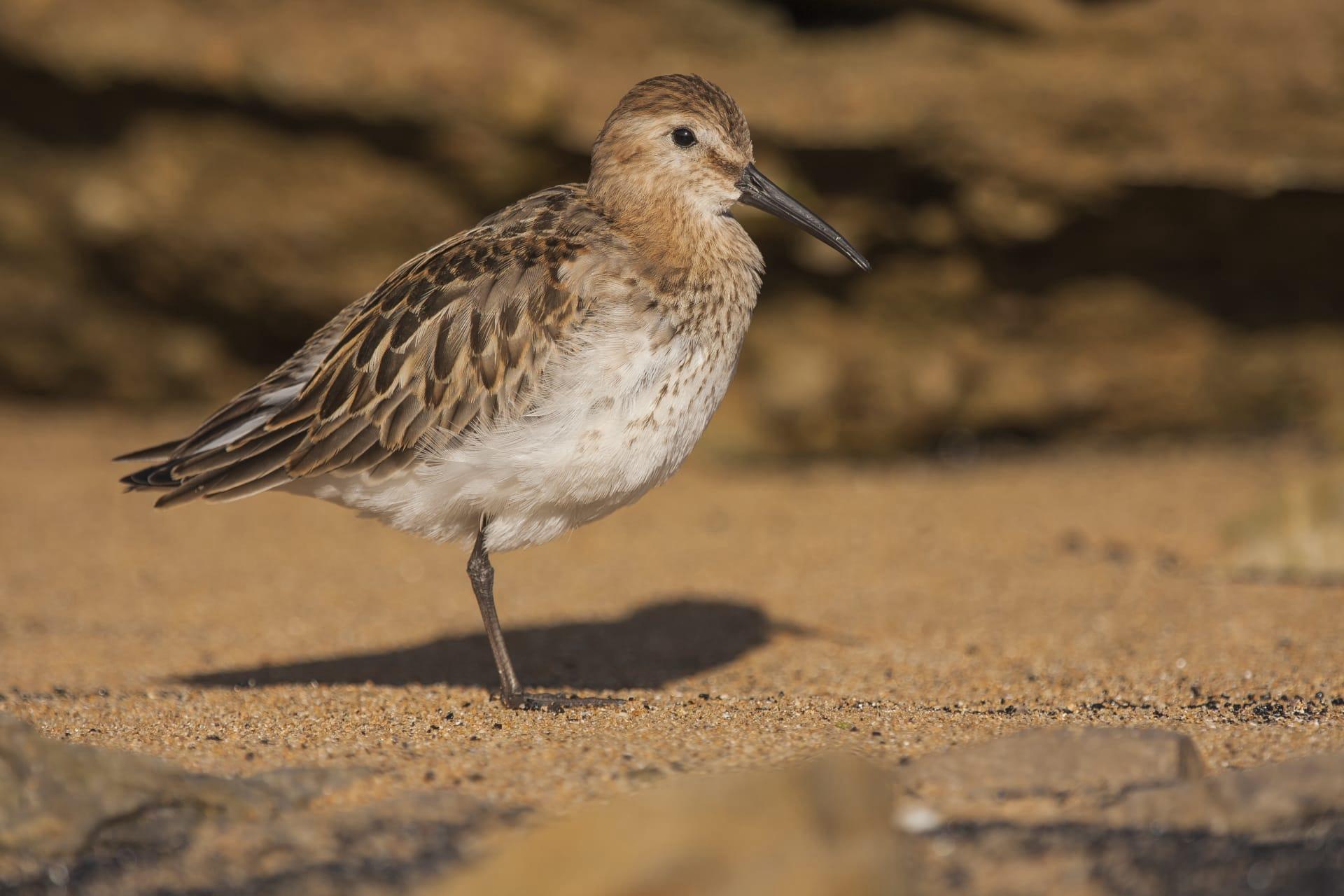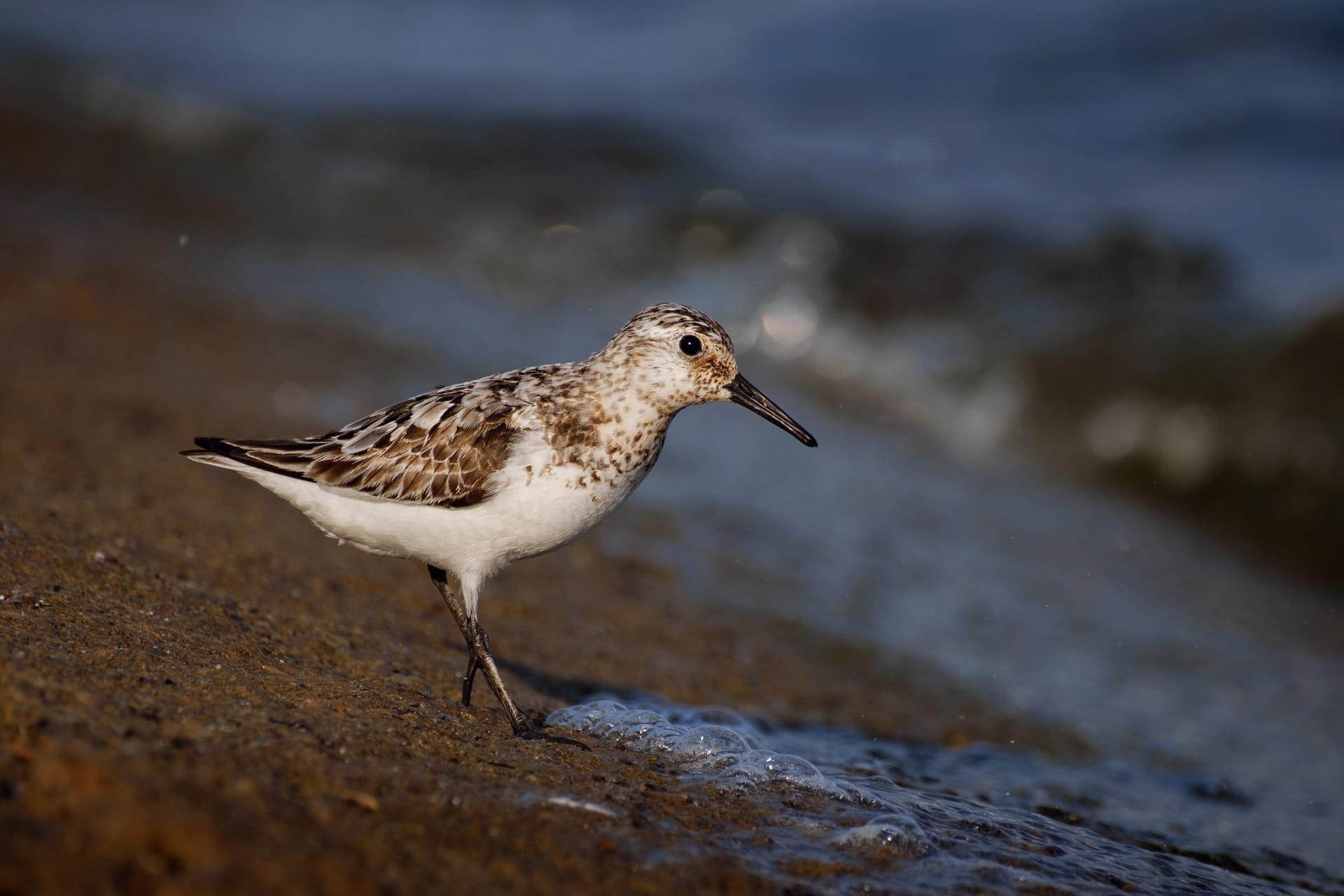Sandpiper Trivia
- Home /
- Trivia Question /
- Animal /
- Sandpiper Trivia
1
Question: How far can sandpipers fly without stopping during migration?
Answer: Sandpipers are remarkable migratory birds. Some species, like the Bar-tailed Godwit, can fly up to 7,000 miles non-stop. That's like flying from New York to Singapore without a break! Their endurance is due to efficient energy use and specialized body adaptations for long flights.
Question: What unique feeding technique do sandpipers use?
Answer: Sandpipers have a fascinating feeding strategy called "probing." They use their long, sensitive bills to probe into mud or sand, detecting prey by touch. This technique allows them to find food that's not visible on the surface, like small crustaceans, insects, and worms. The sensitivity of their bills is so acute they can distinguish between edible prey and inedible objects.

2
Question: Do all sandpipers migrate?
Answer: While many people think all sandpipers migrate, this isn't entirely true. Migration patterns vary among the 85 or so species. Some, like the Purple Sandpiper, migrate only short distances, while others cover thousands of miles. Interestingly, a few species are non-migratory, staying in the same habitat year-round.
Question: Are sandpipers solitary birds?
Answer: It's a common misconception that sandpipers are always solitary. While they do often feed alone, using their long bills to probe for food, many species are quite social. During migration and breeding seasons, they gather in large flocks. These gatherings can be spectacular, with thousands of birds flying in synchronized patterns.

3
Question: How do sandpipers communicate with each other?
Answer: Communication among sandpipers is quite varied and intricate. They use a combination of vocalizations and body language. During the breeding season, males often perform elaborate flight displays accompanied by unique calls to attract females. On the ground, body postures and movements can indicate territoriality or readiness to mate.
Question: What role do sandpipers play in their ecosystem?
Answer: Sandpipers are vital to their ecosystems. As foragers, they control insect populations. Their probing in the mud also aerates it, benefiting other creatures. They are also prey for larger birds and mammals. Thus, they're integral in food webs, influencing both predator and prey dynamics.

4
Question: How do sandpipers adapt to different environments?
Answer: Sandpipers exhibit remarkable adaptability to diverse habitats. From arctic tundra to tropical beaches, they've developed specific features for survival. For instance, their plumage color often matches their environment, providing camouflage. Also, their long legs are perfect for wading in water, and their bill length and shape vary to suit different feeding habits.
Question: What is the average lifespan of a sandpiper?
Answer: The lifespan of sandpipers can vary widely among species. On average, they live about 5 to 7 years in the wild. However, this can extend up to 10 years or more in favorable conditions. Survival rates are influenced by factors like habitat quality, food availability, and predation pressures.

5
Question: What do sandpipers eat?
Answer: Sandpipers have a diverse diet, mainly feeding on small invertebrates. They eat insects, crustaceans, worms, and occasionally small fish. Their diet varies with habitat; those living on coasts may consume more marine organisms, while inland species might eat more insects and freshwater invertebrates.
Question: How do sandpipers care for their young?
Answer: Parental care in sandpipers varies by species. Generally, both parents incubate the eggs, but in some species, like the Wilson's Phalarope, males take the primary role. After hatching, chicks are precocial, meaning they're relatively mature and mobile. Parents guide them to food sources but the young can feed themselves almost immediately.